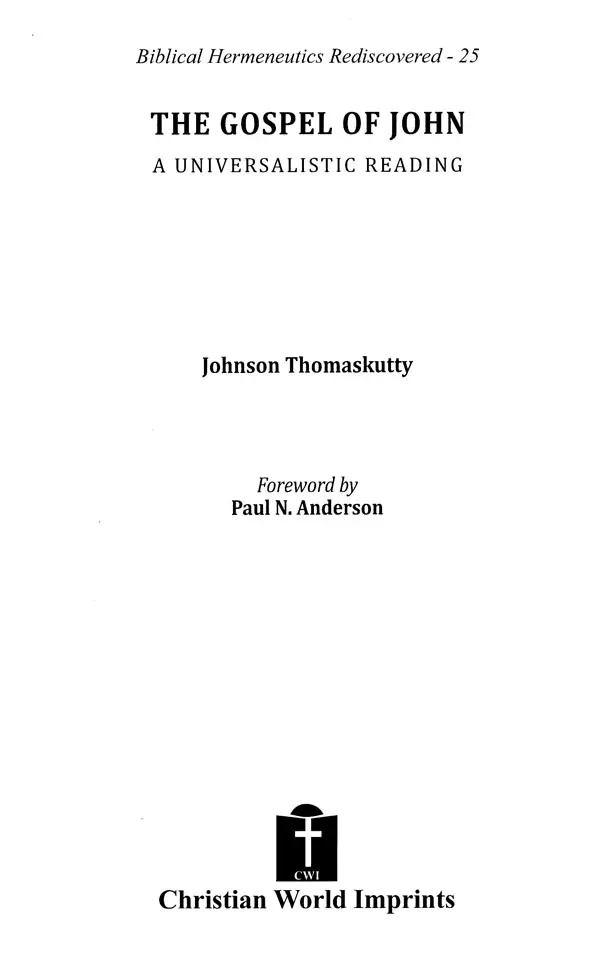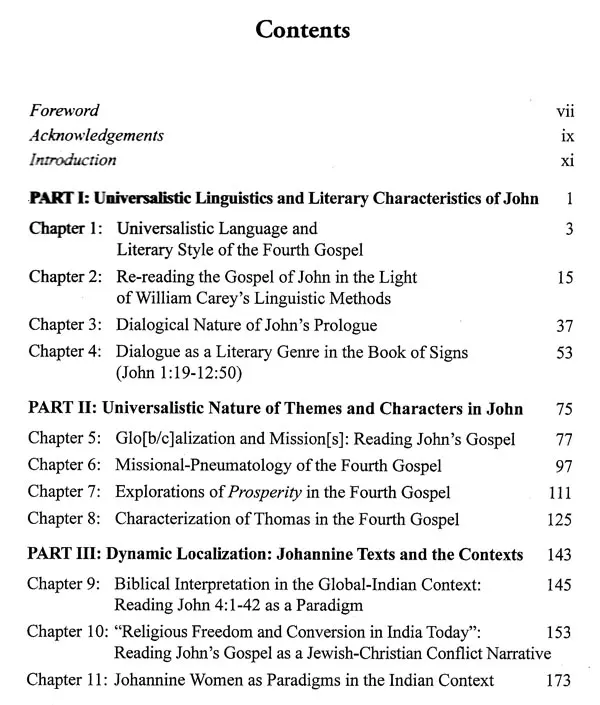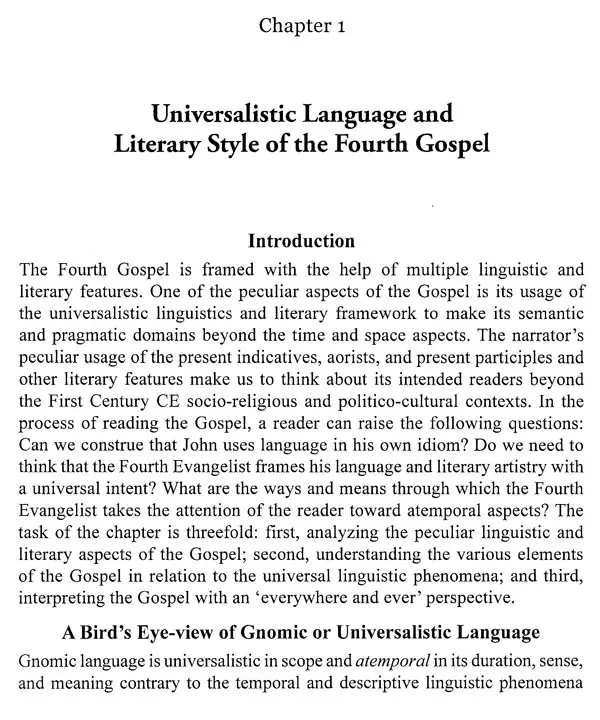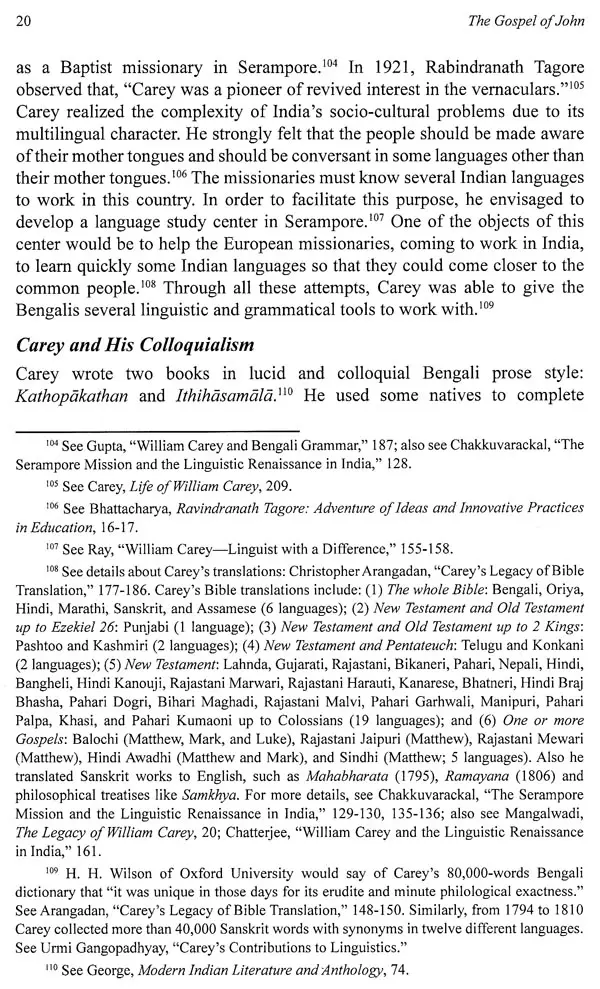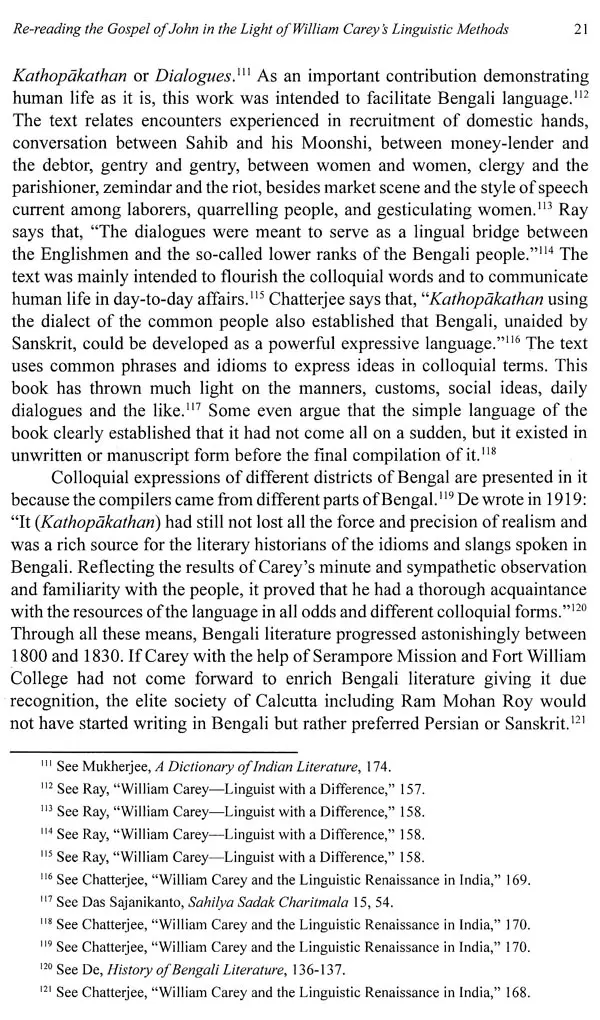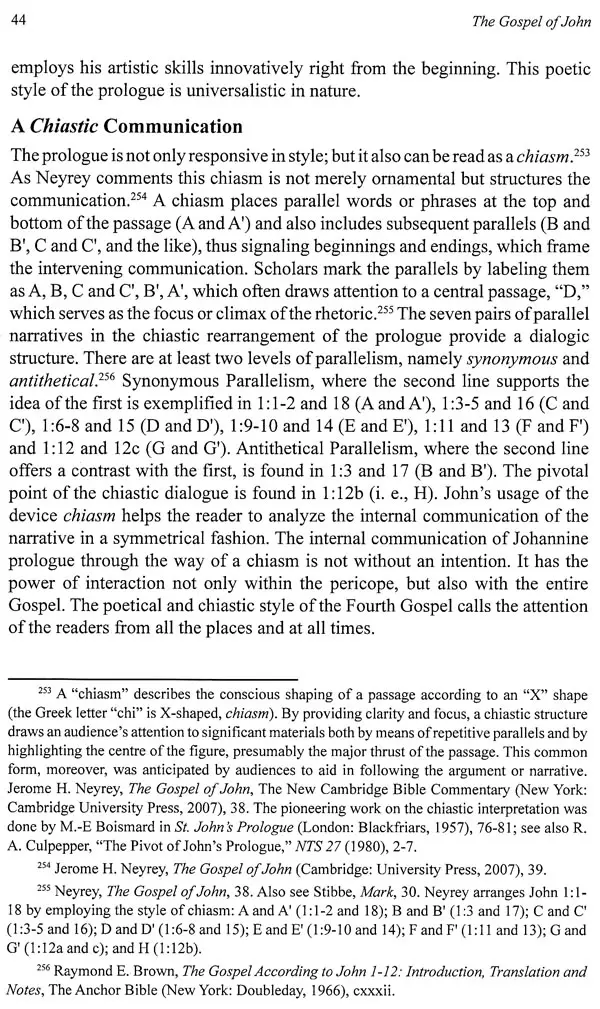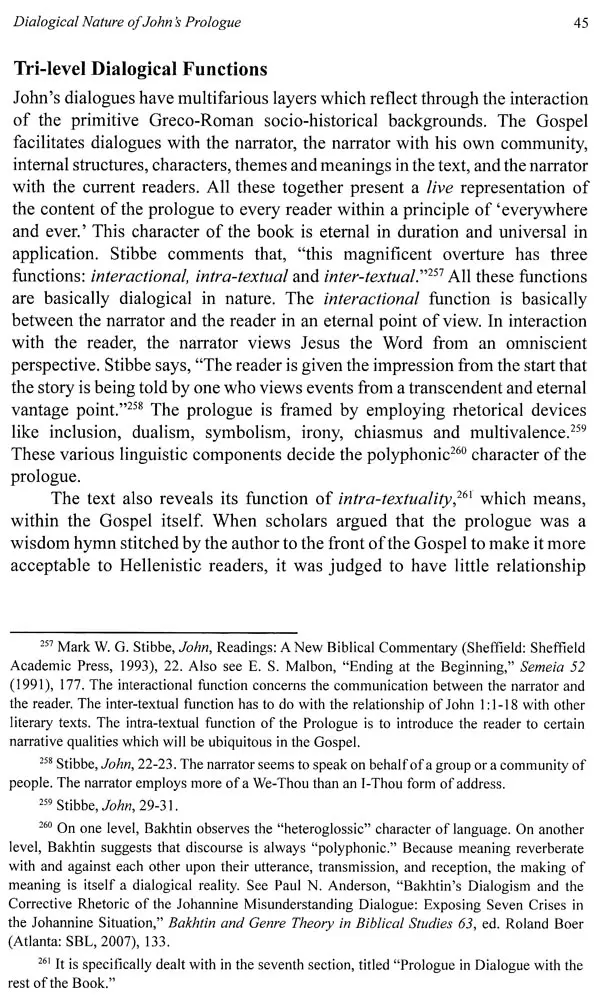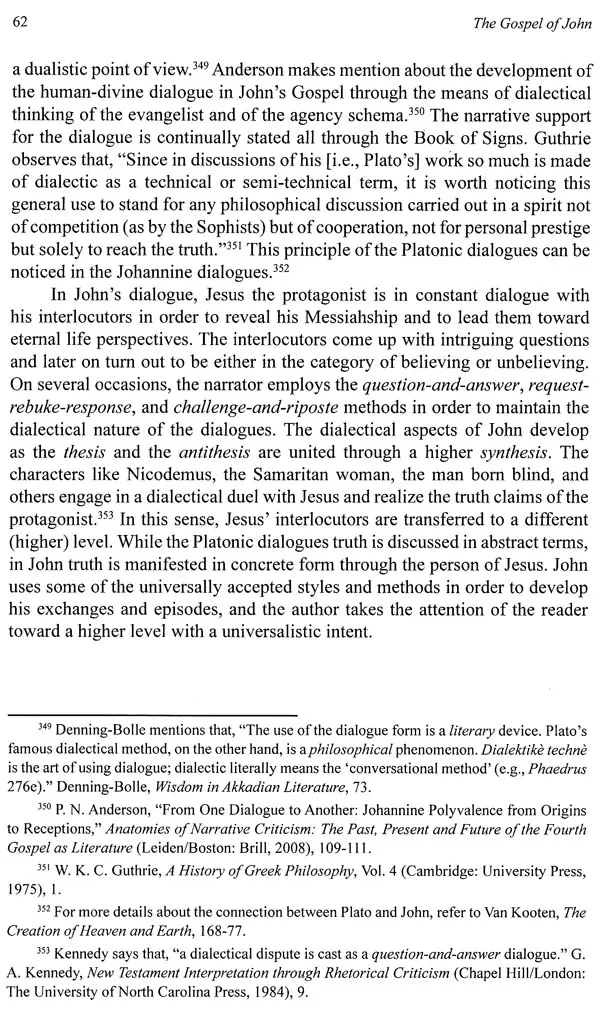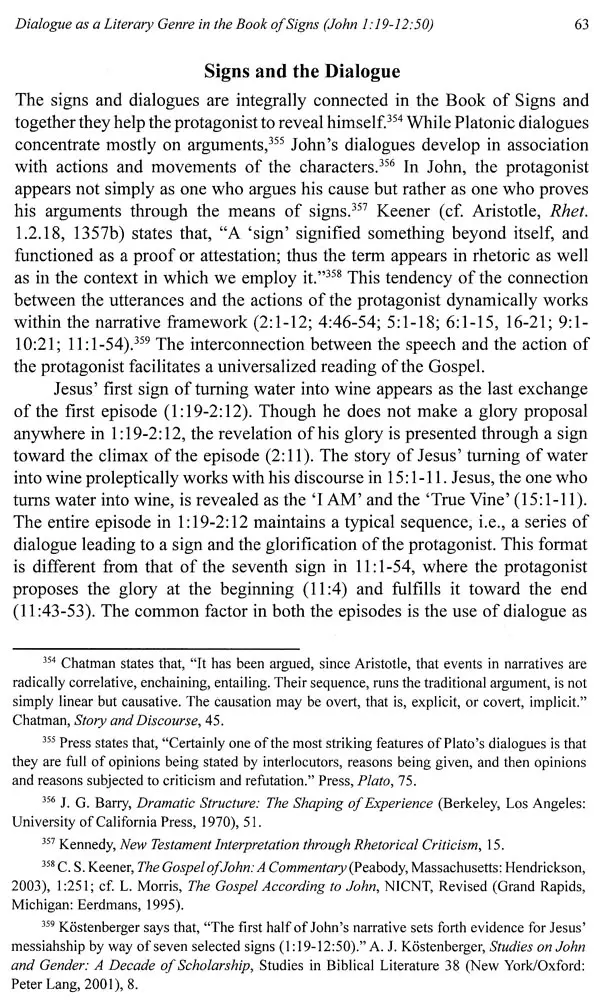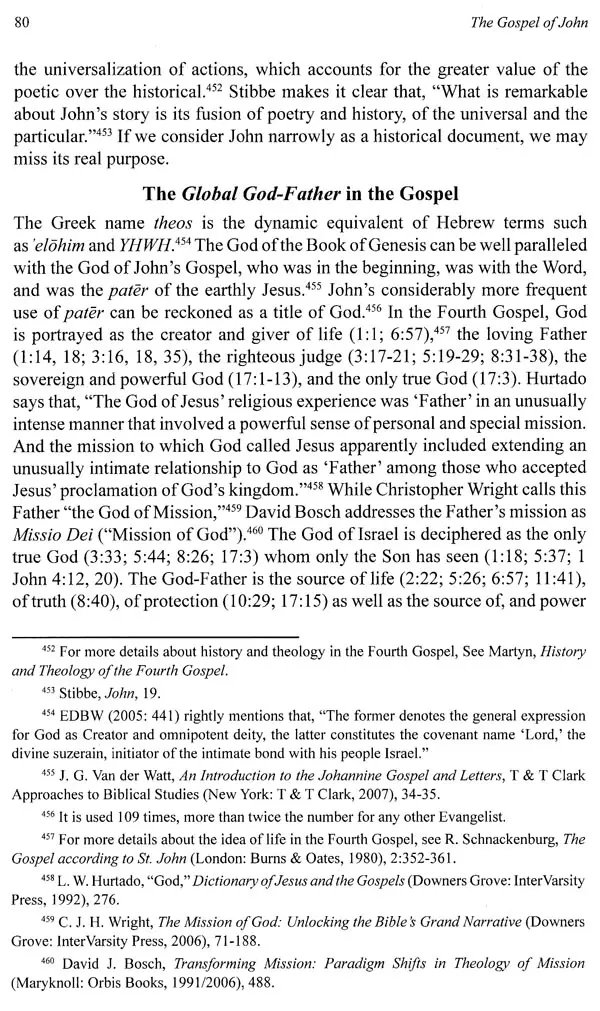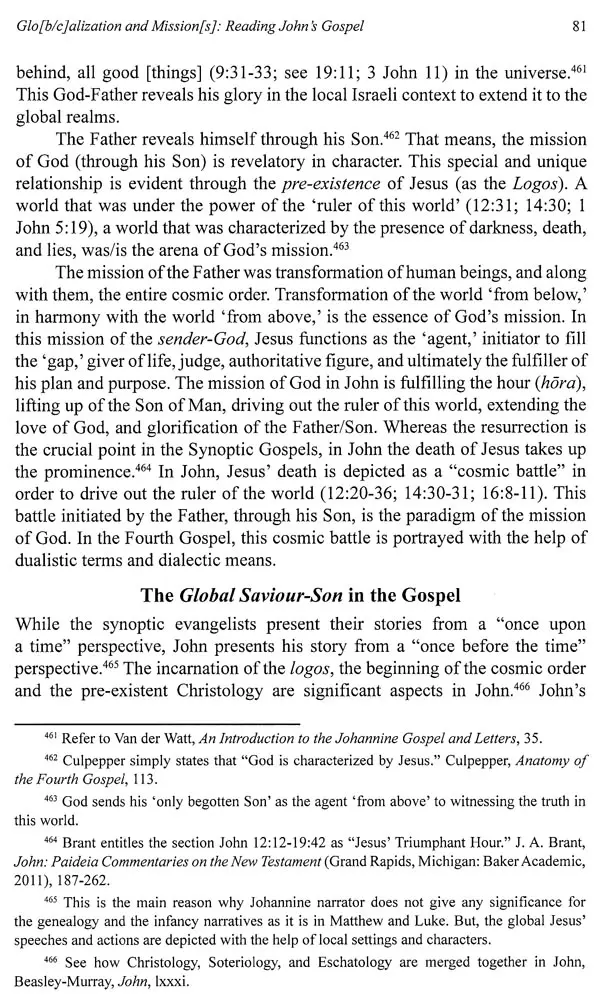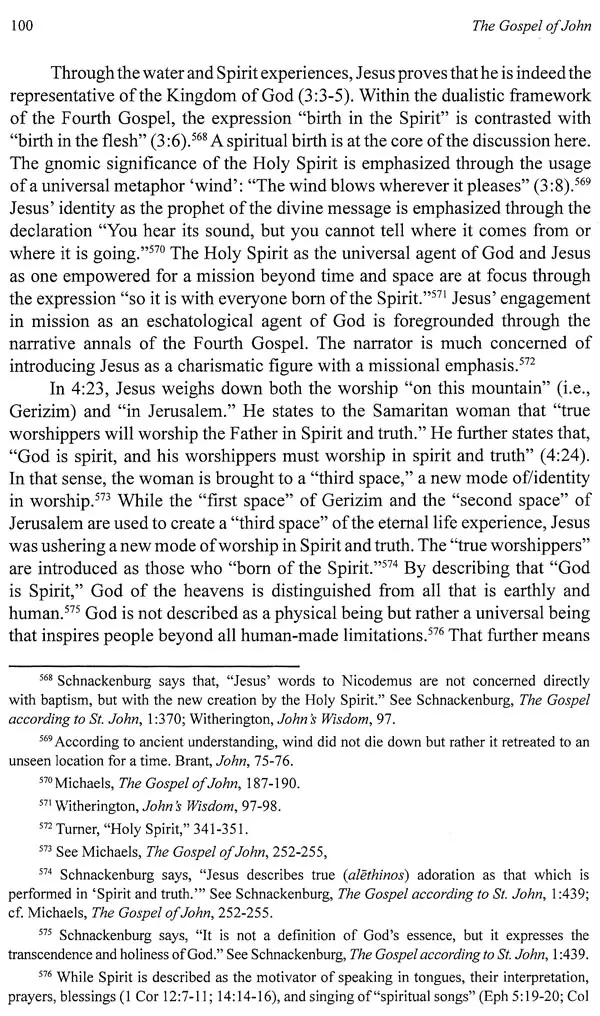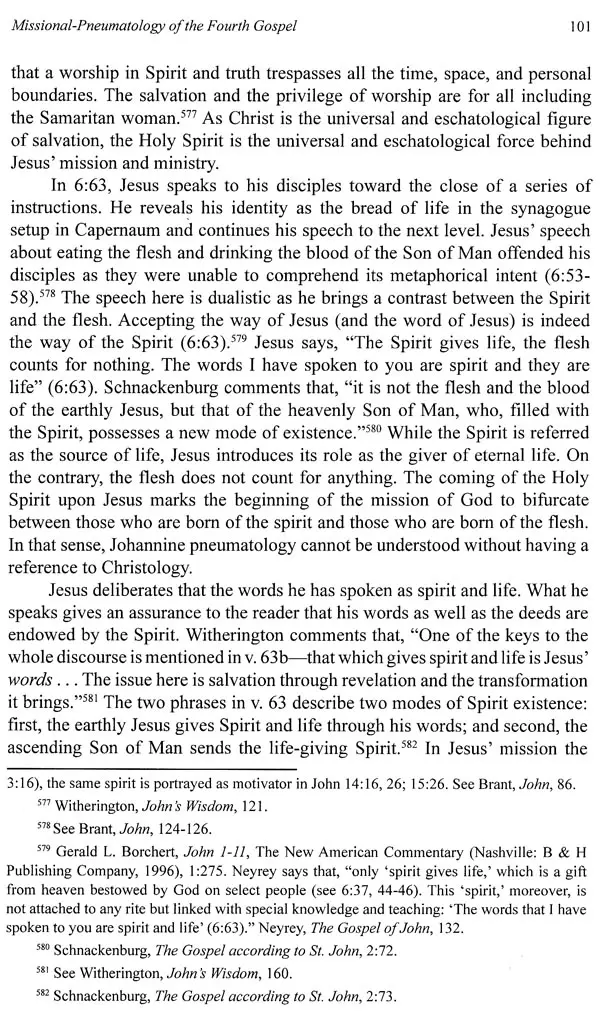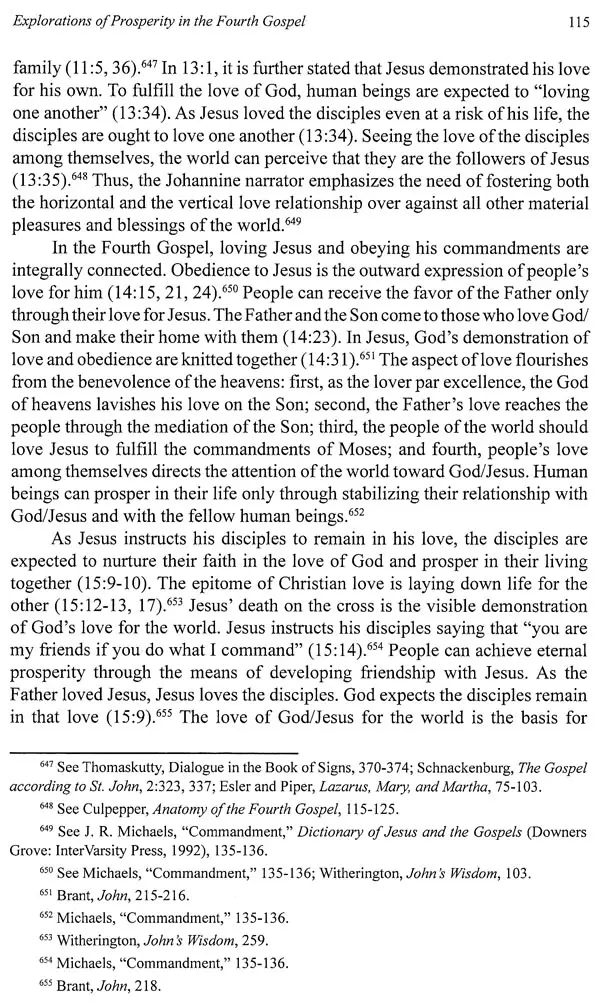
The Gospel of John (A Universalistic Reading)
Book Specification
| Item Code: | UBA339 |
| Author: | Johnson Thomaskutty |
| Publisher: | Christian World Imprints, Delhi |
| Language: | English |
| Edition: | 2020 |
| ISBN: | 9789351484004 |
| Pages: | 320 |
| Cover: | HARDCOVER |
| Other Details | 9.50 X 6.50 inch |
| Weight | 690 gm |
Book Description
The Fourth Gospel functions as a literary masterpiece that facilitates a narrative beyond the time and space aspects. The Gospel’s linguistic phenomena and stylistic aspects are peculiar as they attune the attention of the readers to a dramatic and ideological world of its own. The connection between the narrator and the readers is established from an eternal vantage point as the narrator directs the readers towards atemporal and universal realities. The peculiar linguistic and idiosyncratic techniques of the narrator have the power to absorb the attention of the readers not only from a ‘there and then’ and ‘here and now’ senses but also from an ‘everywhere and ever’ perspective. In that sense, the Fourth Gospel functions as a gnomic and universalistic artistry.
Johnson Thomaskutty (Ph.D., Radboud Universiteit Nijmegen, Holland) teaches New Testament at the Union Biblical Seminary, Pune, India. Formerly, he has served as a Lecturer of New Testament and College Chaplain at the Serampore College, Hooghly, West Bengal. He has authored books titled, Saint Thomas the Apostle: New Testament, Apocrypha, and Historical Traditions (New York/London: Bloomsbury T&T Clark, 2018) and Dialogue in the Book of Signs: A Polyvalent Analysis of John 1:19-12:50 (Leiden/Boston: E. J. Brill, 2015). His forthcoming works include An Asian Introduction to the New Testament (Fortress Press), India Commentary on the Gospel of John (Fortress Press), and Asia Bible Commentary on the Gospel of John (Langham Press).
One of the most intriguing features of the Fourth Gospel is its tensive presentation of nearly all of its major theological themes. John's Jesus is presented as the most human and the most divine everywhere in the New Testament; the Son is both equal to the Father and yet subservient; the Spirit proceeds from the Father and is also sent by the Son; miracles are embellished and existentialized-to name a few. Indeed, John's literary and historical riddles abound, but its theological riddles continue to captivate the attention of its readers across the bounds of time and space.
While these truths held in tension precipitated worldwide discussions among Christians of the second to fifth centuries, leading to the classic theological confessions of Christianity from Nicea to Chalcedon (325-451 CE), one of the great theological issues of the modern era pivots on the question of salvation. Put pointedly, how could it be that there is only one way to the Father, Jesus Christ (John 14:6), while the Light of Christ enlighten everyone (John 1:9)? Is salvation exclusively limited to those who get their theology right in confessing Jesus as the Christ and Son of God, or might people responding in faith to God's saving initiative and grace be recipients of that gift, even before they come to appreciate more fully the timeless truth of standard Christian expressions. Along these lines, a more nuanced understanding of the saving-revealing work of Jesus as the Christ in the Gospel of John is required, and in the present book, Johnson Thomaskutty has provided helpful treatments of this and other important subjects.
The Fourth Gospel functions as a literary masterpiece that facilitates a narrative beyond the time and space aspects. The Gospel's linguistic phenomena and stylistic aspects are peculiar as they attune the attention of the readers toward a dramatic and ideological world that facilitates myriad possibilities of interpretation. The connection between the narrator and the historical/implied/ contemporary reader is established from an eternal vantage point as the narrator directs the reader toward atemporal and universal realities. The author as a classicist encompasses the socio-cultural and religio-political realities of the Greco-Roman world, incorporates the hope of the Jewish society, foregrounds the contextual realities and the struggles of the Johannine community, and fulfills the various demands and requirements of the future generations of the readers and the believers. The peculiar linguistic and idiosyncratic techniques of the narrator have the power to absorb the attention of the reader not only from a "there and then' and 'here and now' senses but also from an 'everywhere and ever' perspective. In that sense, the Fourth Gospel functions as a gnomic and universalistic artistry.
**Contents and Sample Pages**
